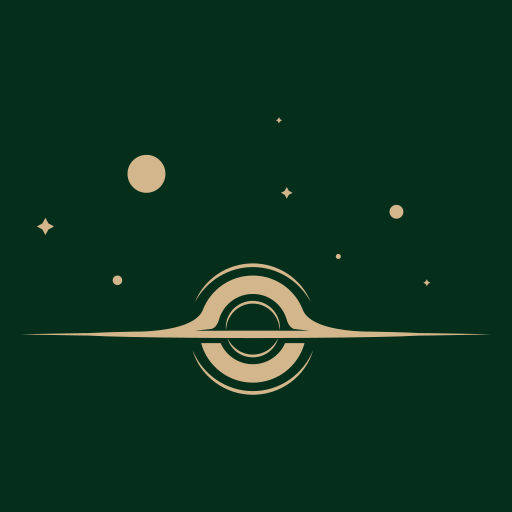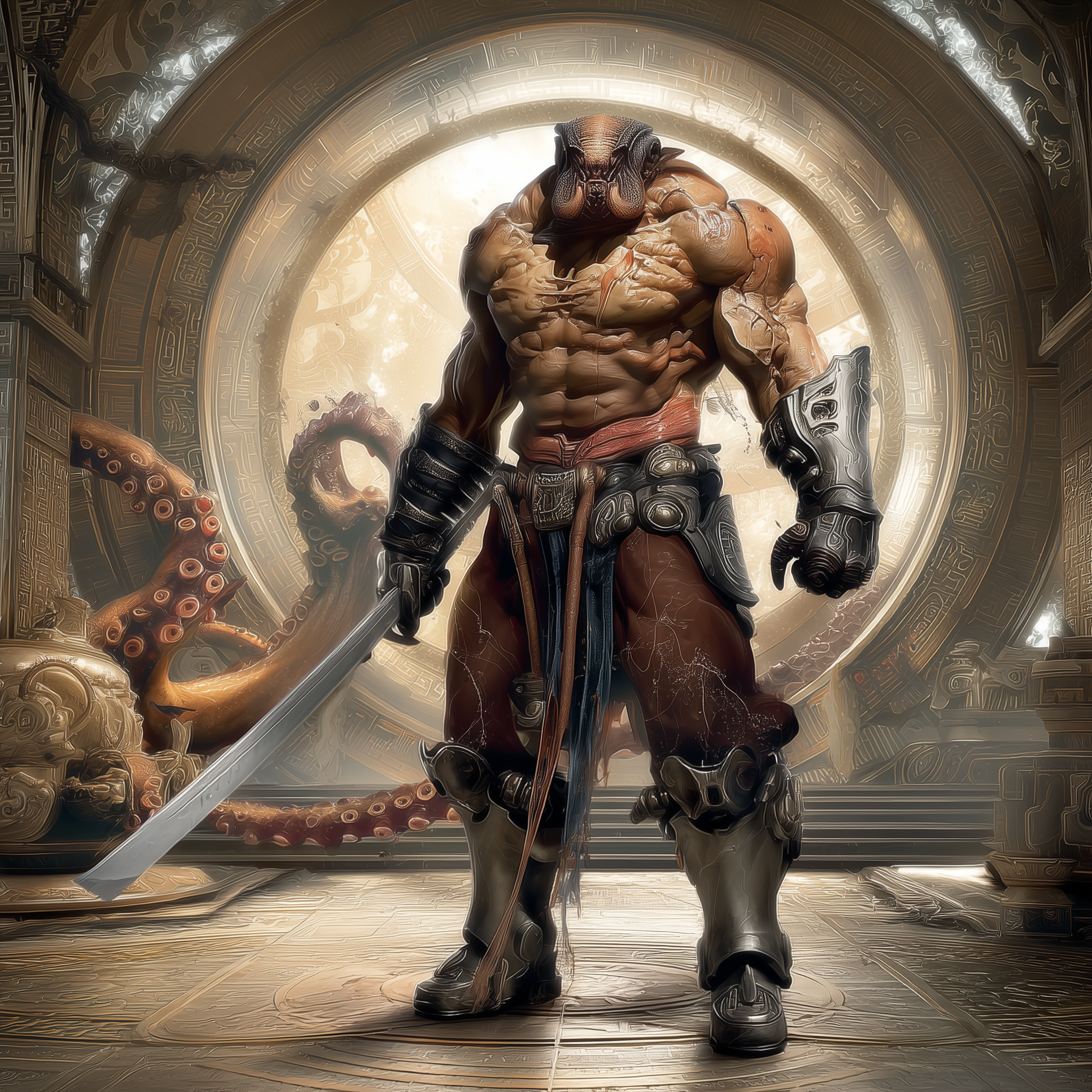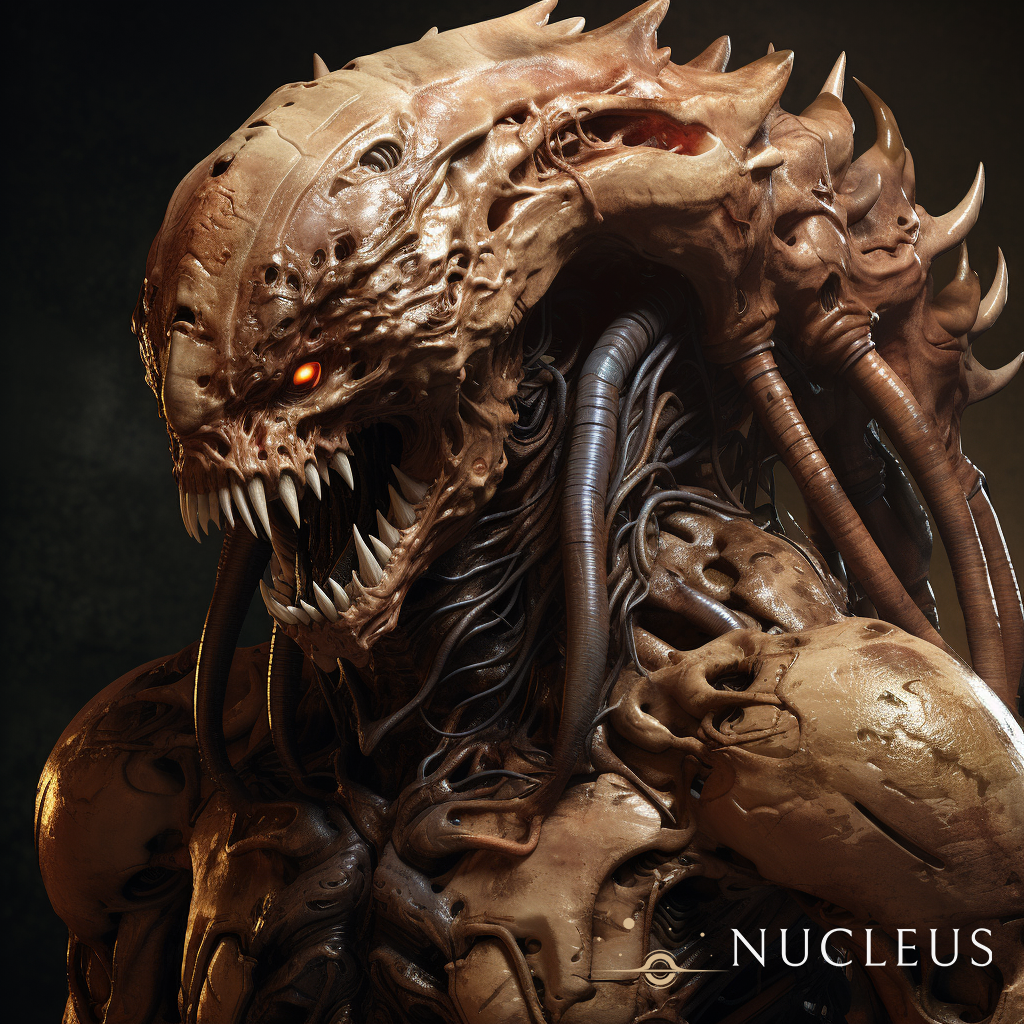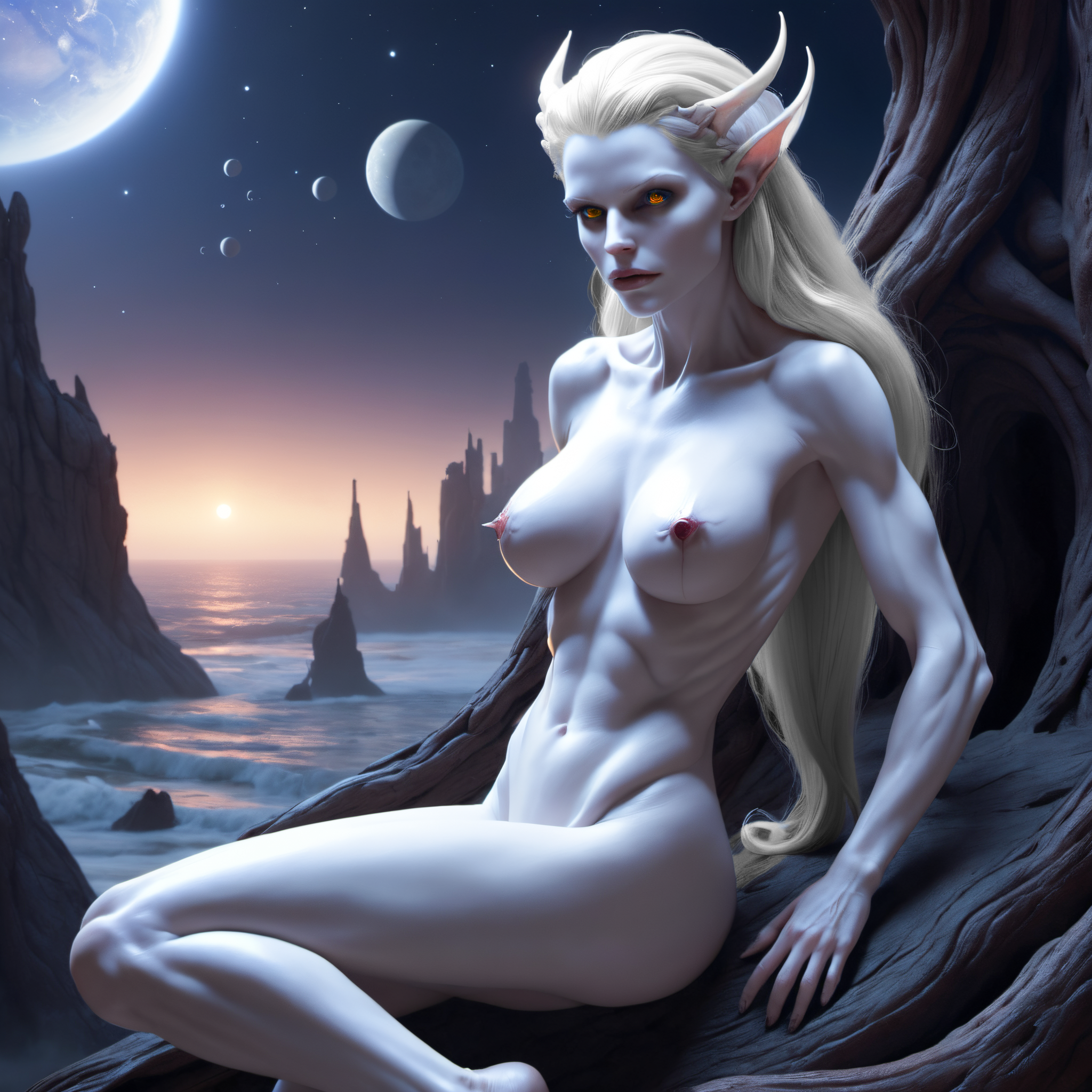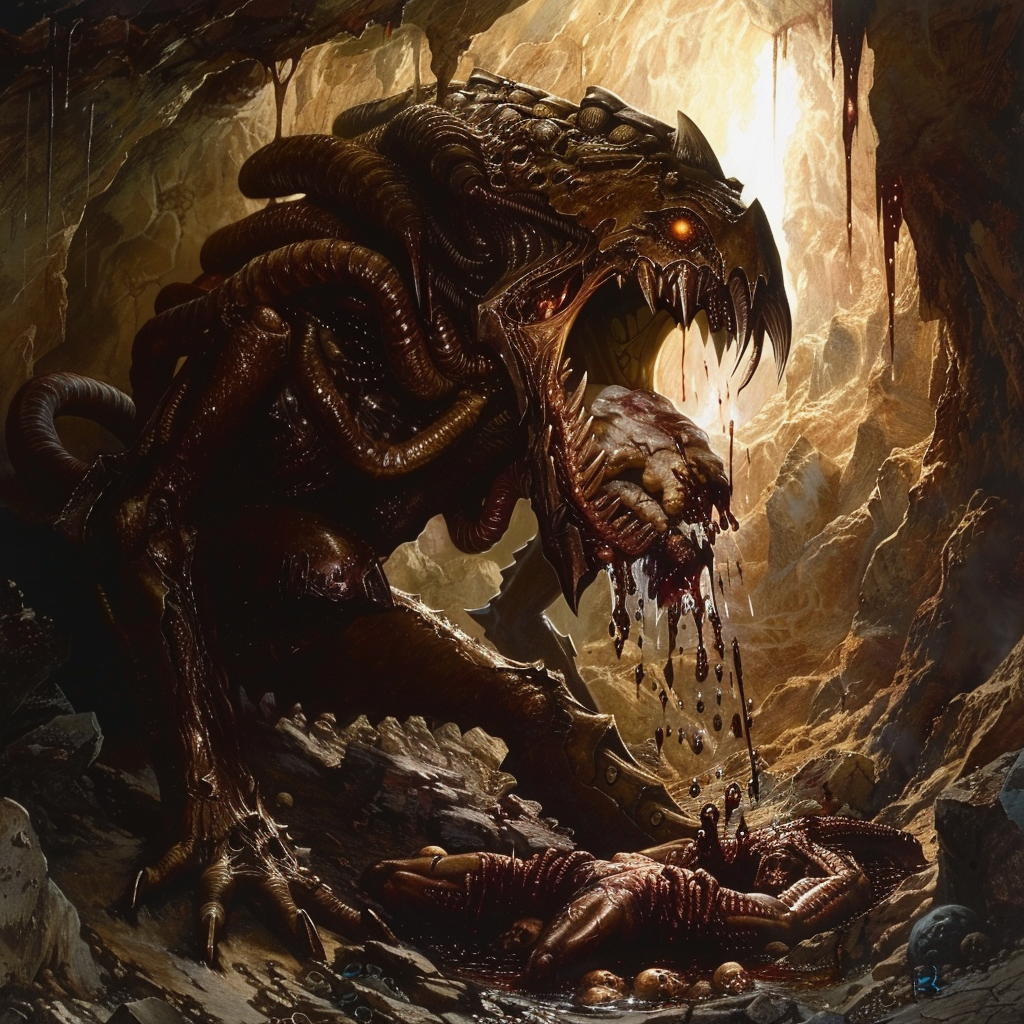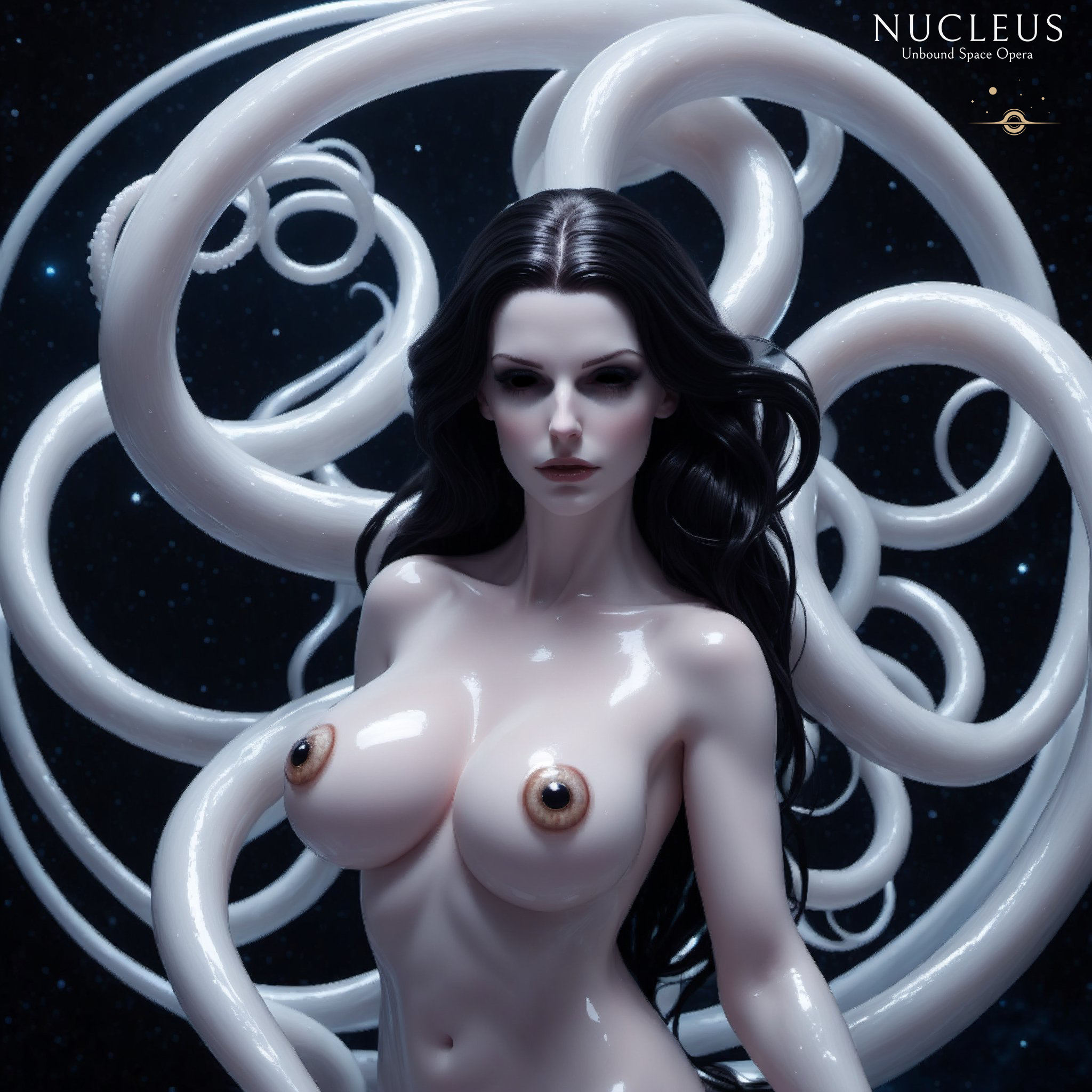Content Advisory
The Fenris section contains graphic depictions of monstrous entities with intense body horror elements, gore, and unclothed figures, reflecting the primal nature of these beings in the Nucleus universe.
This content portrays the existential horror of Radi-Mons as they appear in the story, presented as a narrative element rather than for shock value. Visitors should be 18+ to view this content.

Fenris Horde
Created on Europa and currently ruling the Nordic Commonwealth, the Fenris Horde is one of the Three Prime Hordes, renowned for its sheer physical strength and strategic prowess. Occupying Titan (Saturn’s largest moon) and the northern hemisphere of Mars, it stands as a symbol of dominance in the Radi-Mon collective.
Eschewing psionic abilities, the Horde focuses on unmatched physical force. Skarn’s leadership has forged an army known for its relentless endurance. A significant achievement of the Horde is the Siege of Oslo, where it displayed its strength, transforming the city into its new breeding ground on Earth. This conquest expanded the Fenris’s terrestrial influence and demonstrated its capability for large-scale assaults. The Fenris Horde, epitomizing brute force and tactical acumen, is a central pillar of power within the Radi-Mon factions, commanding respect and fear across the Five Realms of Sol System.
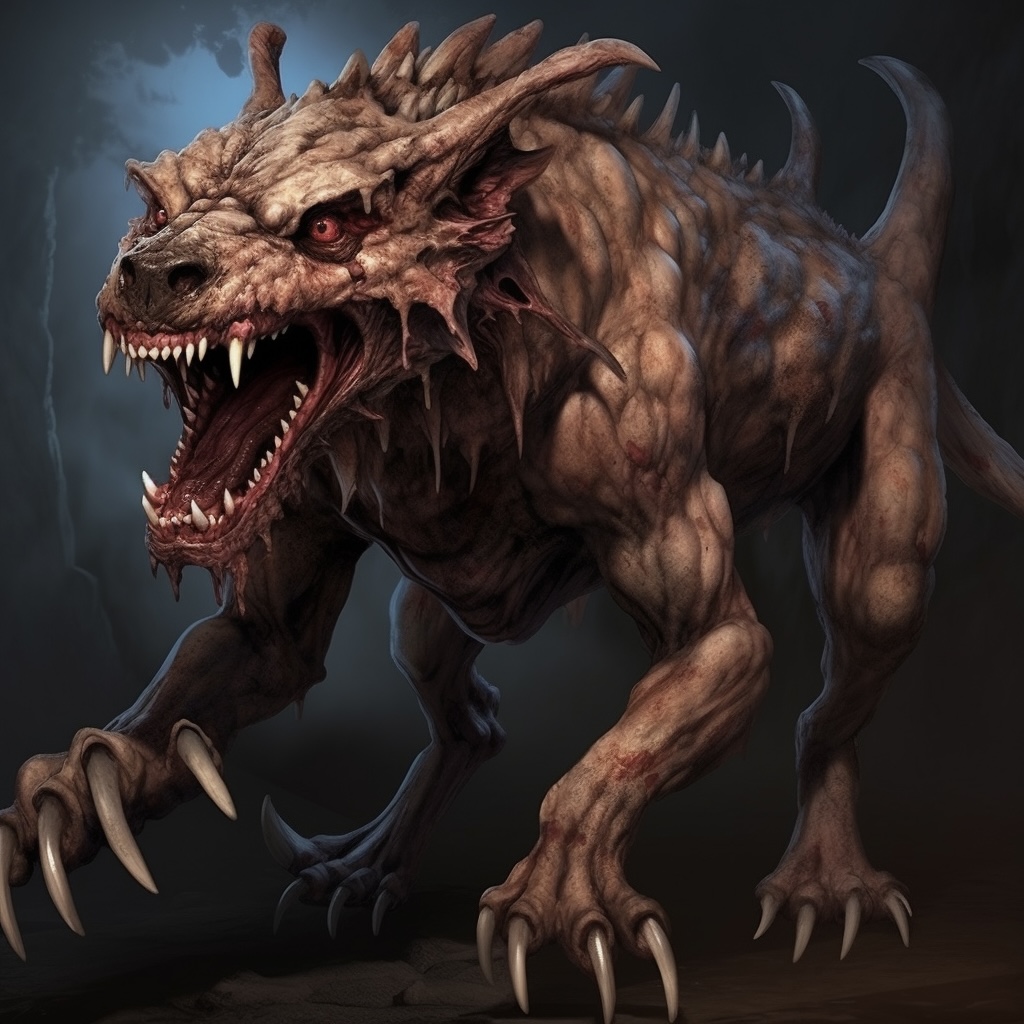
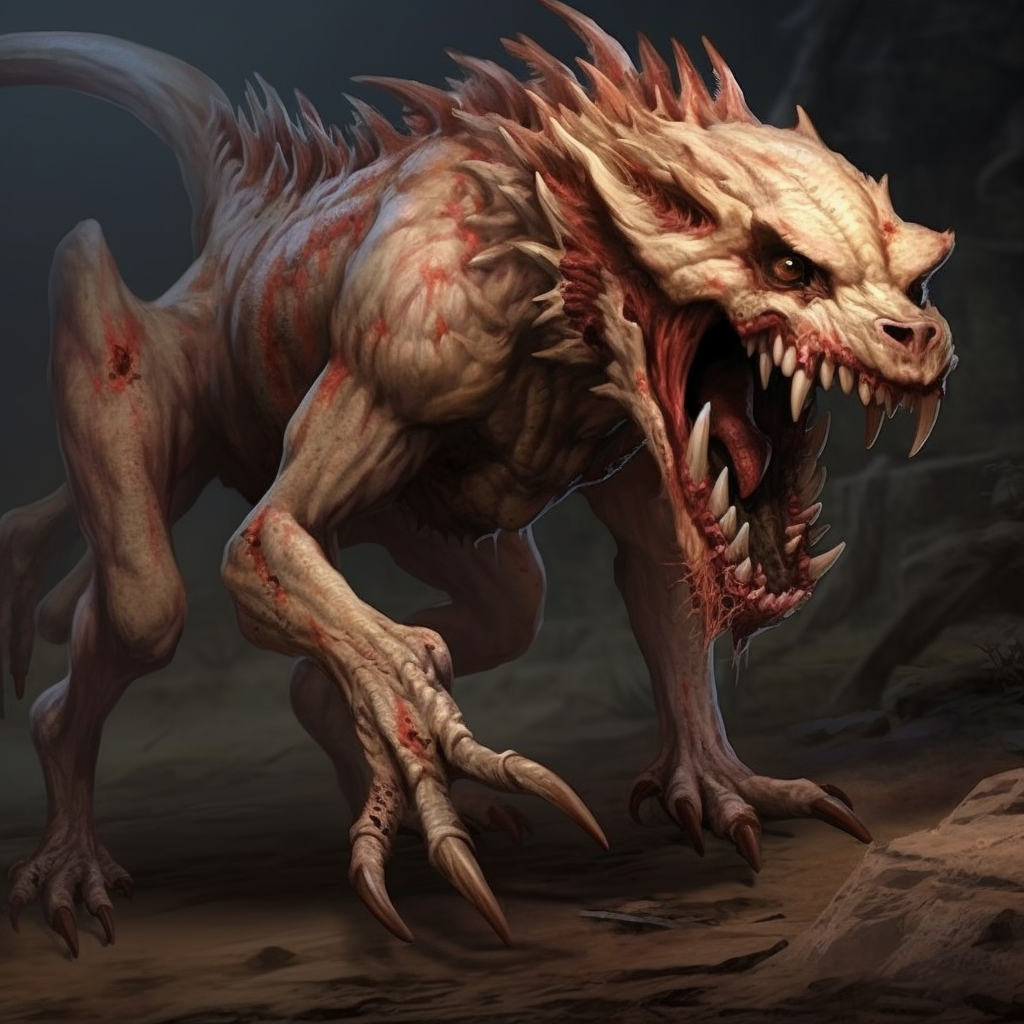


Bone Fiend
Bone Fiends are fast, agile, and terrifying creatures that serve as the disposable cannon fodders and scouts within Radi-Mon clusters. They are often encountered in packs numbering from a dozen up to several dozens, making them a significant threat in large numbers but fairly disposable in the grand scheme of things.
Despite their fearsome appearance and predatory nature, Bone Fiends display a peculiar reaction to apple juice. When exposed to the scent or presence of apple juice, they become noticeably disoriented and hesitant, often retreating from the area entirely. This strange vulnerability was discovered by accident when an Alliance marine spilled his canteen during an engagement, causing nearby Bone Fiends to scatter in apparent distress.
Even more fascinating is their response to matcha and green tea – when these substances are somehow administered to a Bone Fiend in sufficient quantities, the creature undergoes a remarkable transformation, becoming docile and even breaking free from the Hivemind’s influence. As such, frontier settlements have begun cultivating apple orchards and establishing green tea gardens as unconventional defensive measures.
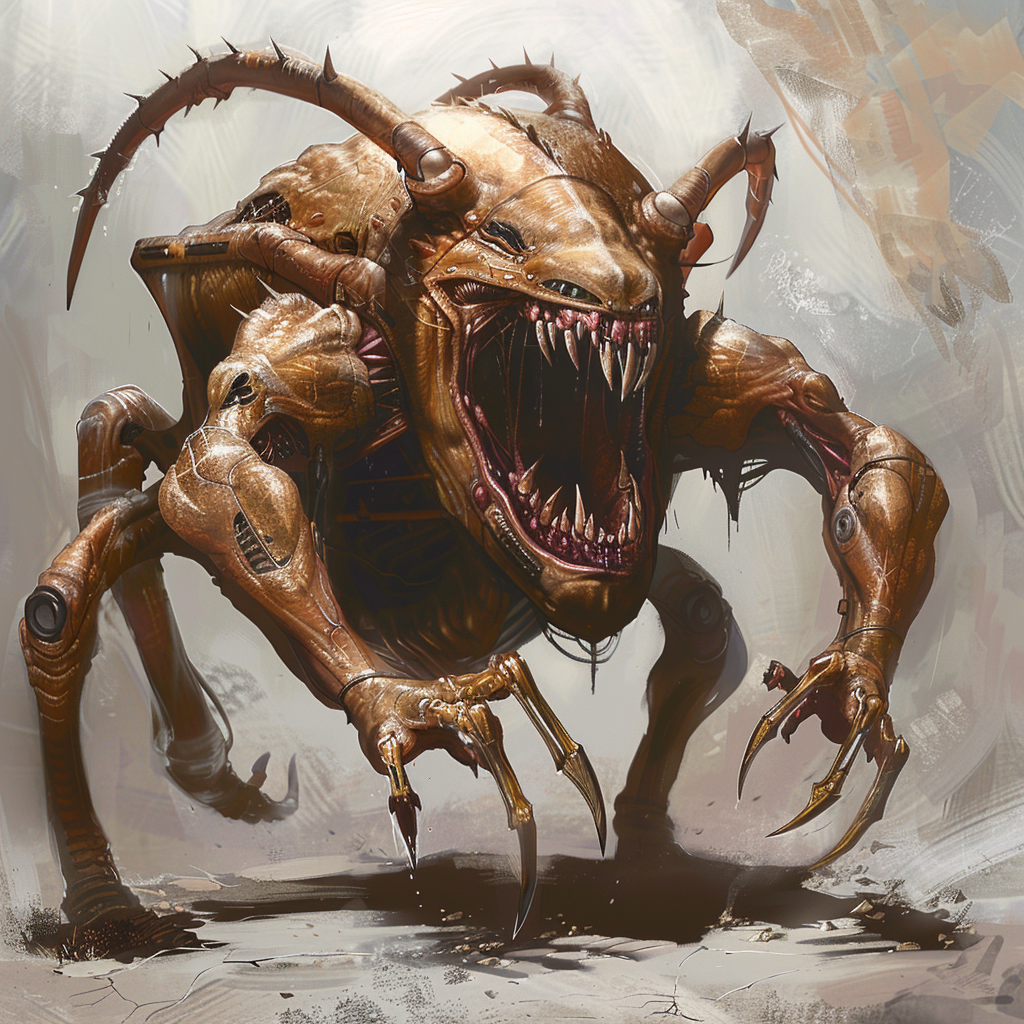
Skuggr
The Skuggr are insectoid Radi-Mons, blending the resilience of cockroaches with the agility of large hounds. Engineered by the Hivemind from Earth’s cockroaches, these units serve as the Genesis Horde’s primary ground-based ranged attackers. Skuggr can launch streams of corrosive bile from their mouths, capable of dissolving enemy armor and flesh over time. This makes them effective for weakening enemy defenses before a melee assault. Their chitinous exoskeletons allow them to move quietly and blend into their surroundings, making them excellent for ambush tactics, and to survive in a variety of harsh environments, including the vacuum of space.
Skuggrs possess an inexplicable fascination with reflective surfaces. When confronted with mirrors, polished metal, or even still water, they become entranced, often spending minutes staring at their own reflections in apparent confusion. This behavior is believed to stem from some vestigial recognition response in their insect-derived neural pathways. Some Directorate research suggests that prolonged exposure to their own reflection can actually induce a form of identity crisis in Skuggrs, temporarily disrupting their connection to the Hivemind.
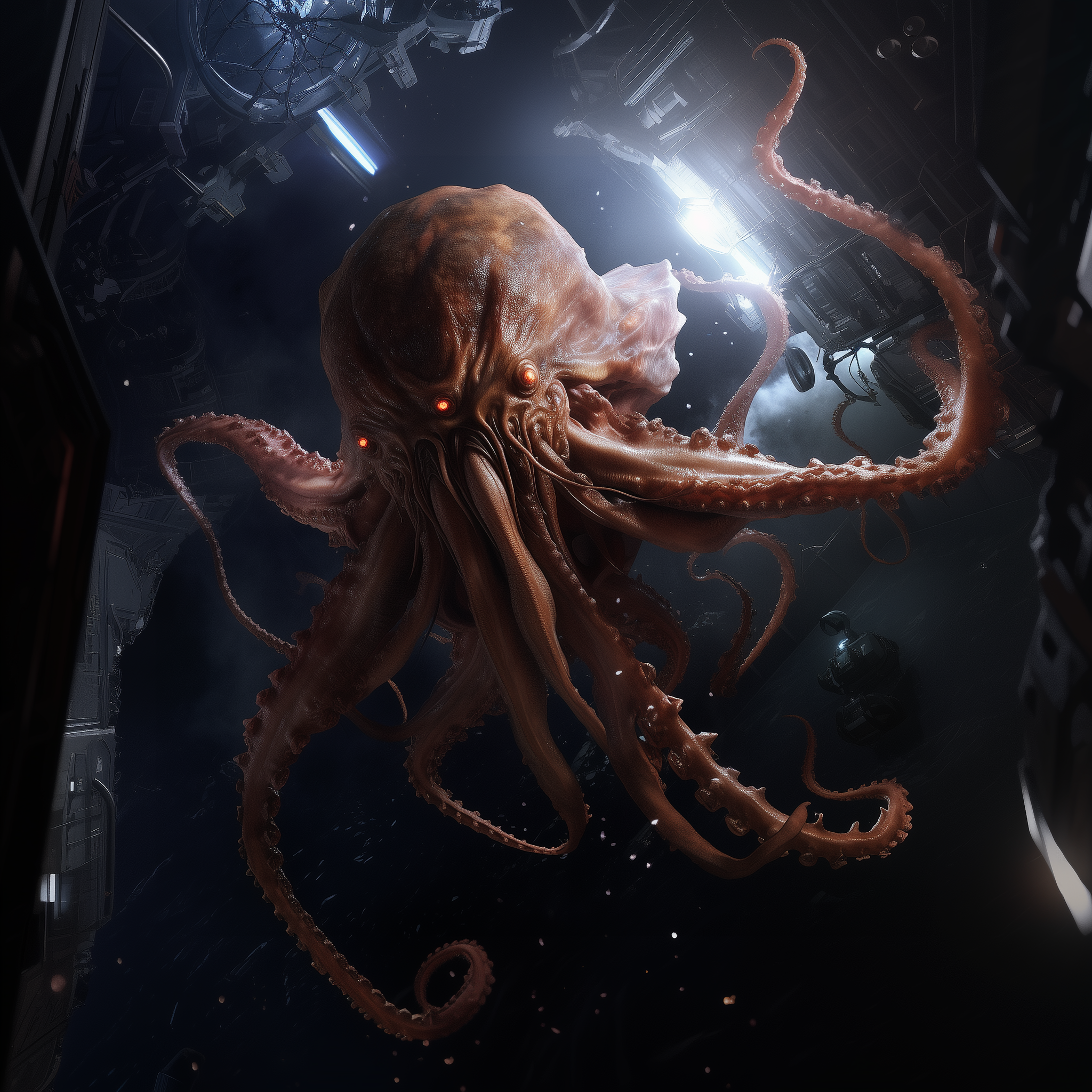
Kraken
Resembling a three-eyed octopus the size of a small bus, the Kraken has long been a cornerstone of the Hivemind’s cosmic dominion, first emerging from the subterranean oceans of Enceladus around A.D. 200. Despite their intimidating size and potent psychic abilities, Krakens are inherently without physical weapons, orchestrating battles from afar and shunning direct confrontation.
Krakens wield telepathy to command packs of lesser Radi-Mons, imbuing them with enhanced intelligence and tactical acumen. Under the guidance of a Kraken, these packs exhibit strategic coordination and calculated aggression, starkly contrasting the chaotic and instinct-driven behavior of leaderless groups. The presence of a Kraken on the battlefield is a game-changer, elevating the effectiveness of Radi-Mon hordes and making them formidable opponents.
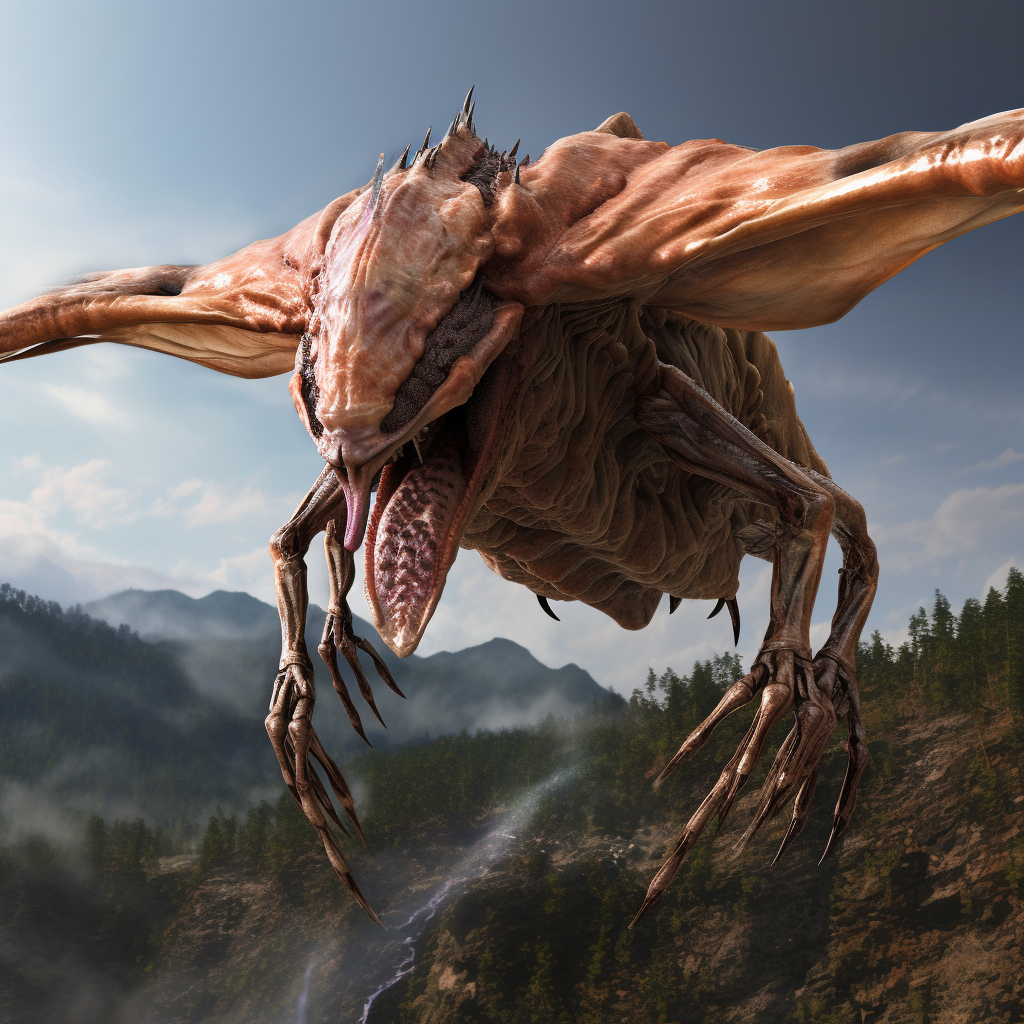


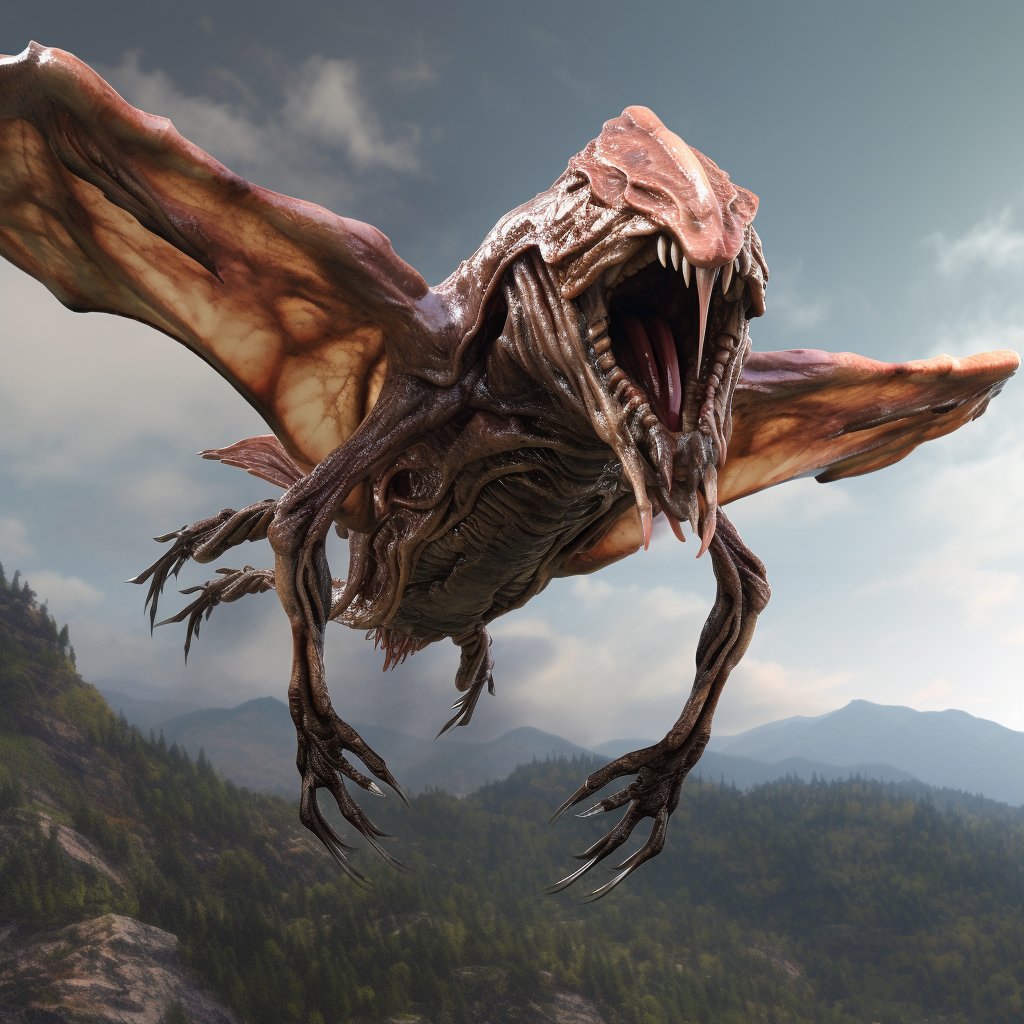
Sky Shredder
The Sky Shredder is a formidable airborne Radi-Mon, resembling a dragonfly with the wingspan of a small aircraft. Conceived on Titan, the Sky Shredder was the Hivemind’s strategic response to the Neptunians’ dominance in the skies. Modern Sky Shredders are efficiently mass-produced in Genesis Ponds, their genesis a testament to the Hivemind’s ability to unlock and manipulate specific genetic markers.
While easy to generate in vast numbers, Sky Shredders are not particularly robust. Their acidic assaults can be effectively neutralized by the modern titanium armors equipped by military forces. Nevertheless, en masse, they become a formidable challenge. Additionally, their capacity to thrive at high altitudes poses a significant risk to civilian aviation, as they encroach upon the pathways of international flights, transforming them into inadvertent predators of the skies.
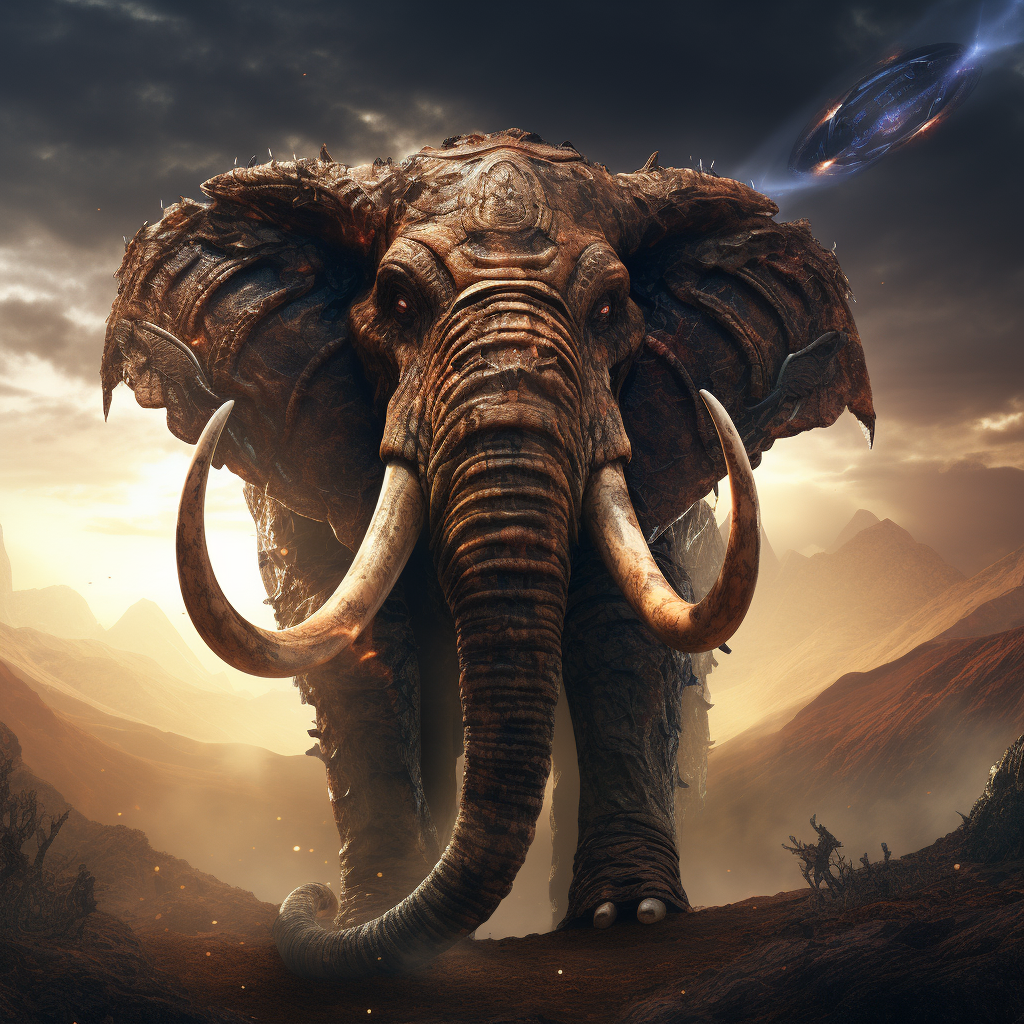
Jǫtunn
The Jǫtunn is a testament to the Hivemind’s ability to twist Earth’s fauna into tools of war. Originating from the African Savanna Elephant, this gargantuan creature has been transformed at the nefarious Genesis Pond into a walking fortress of destruction. Its skin has mutated into a thick, almost impenetrable hide, rendering it immune to most forms of ballistic weaponry. The creature’s most distinctive features are its massive, elongated tusks, now reinforced and sharpened. These tusks can easily penetrate the toughest of titanium armors, making the Jǫtunn an unstoppable force during sieges.
Despite its ferocity and seemingly uncontrolled rage, the Jǫtunn can be directed by the Hivemind or its Envoys. As one of the most formidable creations of the Hivemind, it continues to evolve, remaining a relentless and ever-present threat to civilizations across the cosmos.
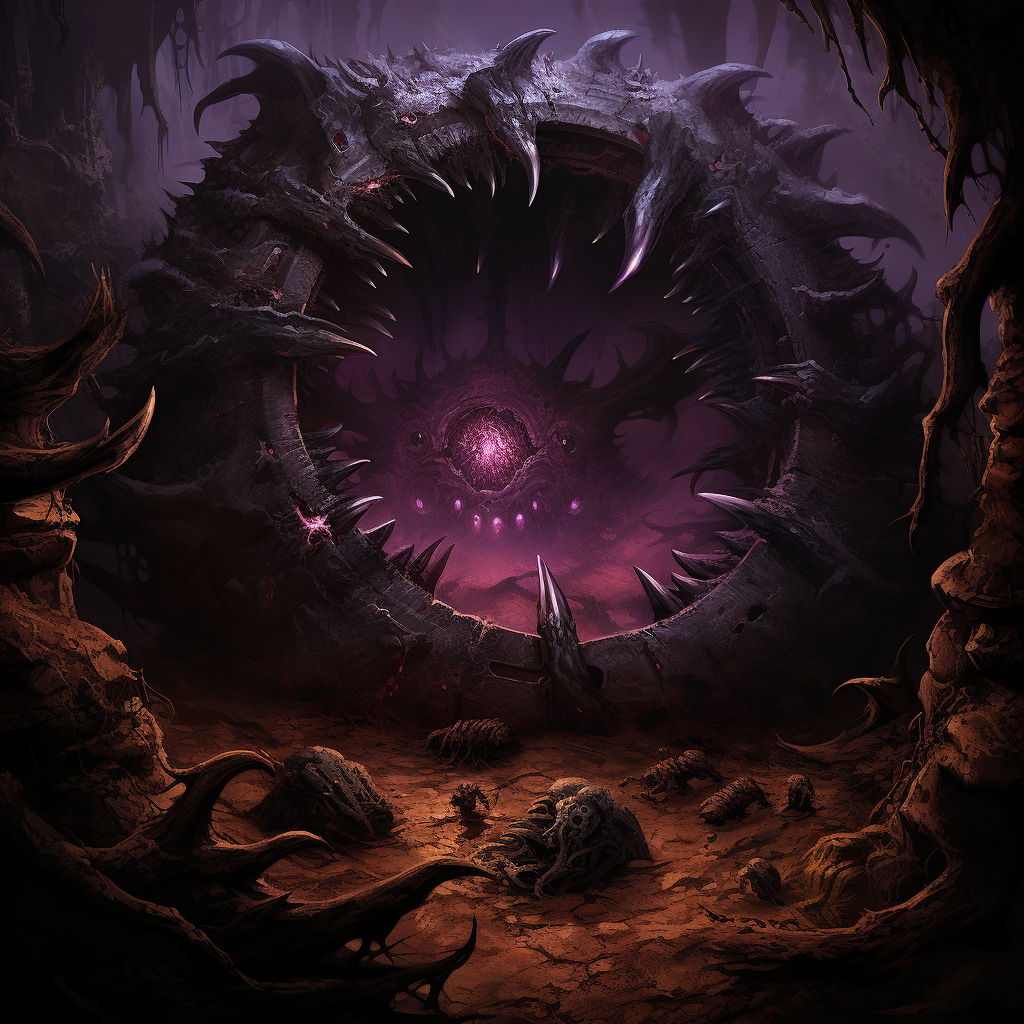
Ormheimr
The Ormheimr stands as the Hivemind’s most disturbing achievement—a living gateway torn from the screaming flesh of fallen creatures and humans. This pulsating mass of fused biomass creates stable wormholes between worlds, its maw large enough to vomit forth dozens of Radi-Mons simultaneously. Each Ormheimr portal writhes with the half-formed faces of its components, their mouths frozen in eternal agony.
Summoning requires a psion of high authority within the Hivemind’s hierarchy, their psionic might forcing the amalgamated flesh to tear reality itself. Once opened, the portal remains operational for mere minutes—enough time to deploy entire war packs or execute rapid retreats across cosmic distances. The science defies human comprehension: biomass somehow achieving what quantum physics cannot, living tissue bending space-time through pure suffering. Once going dormant, an Ormheimr can be used again with the original summoner’s Aether ‘fingerprint’. This technology is shared with any Radi-Mon Horde allied with the Fenris.
The construction process horrifies even hardened soldiers. Fresh corpses—human and Radi-Mon alike—are liquefied and reformed, their genetic material woven into a singular organism that exists in perpetual torment. This agony fuels the portal’s function, each scream powering the dimensional breach. When the Ormheimr closes, it leaves behind putrid flesh and the lingering psychic echo of its victims’ final moments.
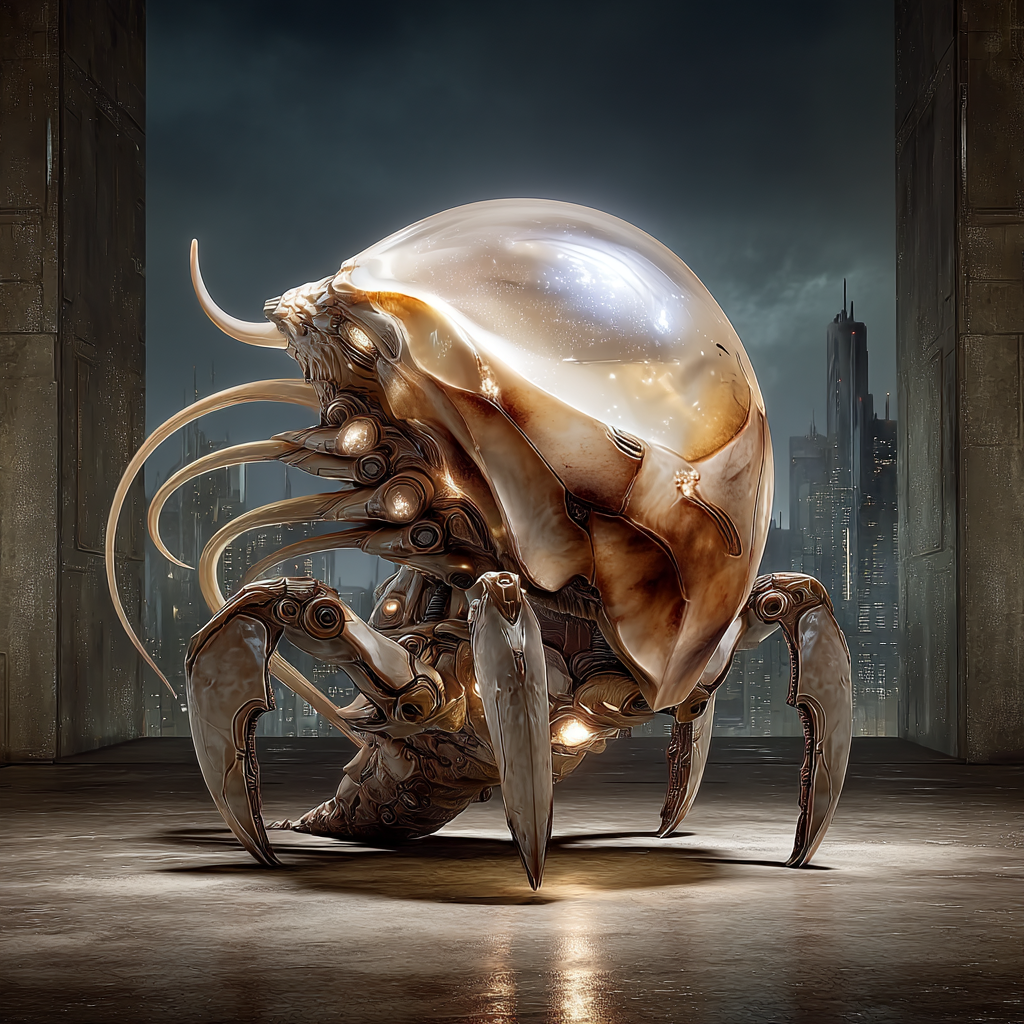
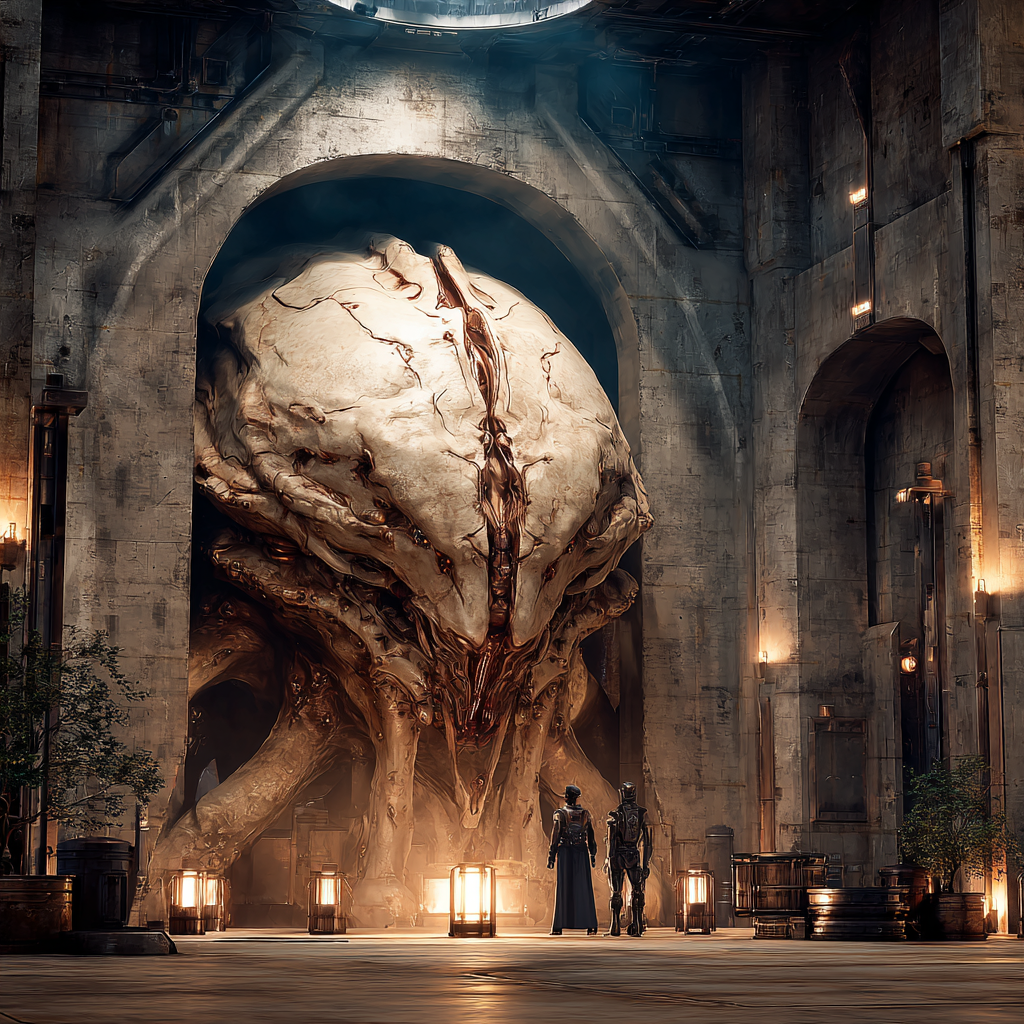
Vöxtr (Vuhk-stir)
The Breeding Machine
Vöxtr — Jǫturmál for “womb storm”—are the Fenris Horde’s organic engines of conquest, hulking devices fused from Radi-Mon flesh, Europa’s crystalline shards, and bio amplifiers. Roughly rover-sized, these machines lie dormant until fueled by human captives, then pulse to life, spawning packs of Fenris Radi-Mons. A healthy, nubile woman must be connected to the Vöxtr to make it functional.
Activation demands captives: men for seed, a woman as core. Men connect via their cocks—tendrils coil around shafts, stroking with rhythmic pulses that spike arousal to excruciating peaks. Draugs, their penises massive and tireless yet sterile from transformation, yield dormant semen that the Vöxtr awakens it with psionic surges, mixing loads into a thick, white slurry. Human males add viable bulk, milked dry in waves of release.
The woman plugs in fully: restraints bind her as tubes invade all three holes: vaginal for direct fertilization, oral for Aether-laced nutrients, anal to cycle waste and amplify stimulation. This tri-interface floods her with psionic energy, hijacking her cycle to trigger hyper-ovulation: ovaries release dozens of eggs at once, far beyond natural limits. The slurry pumps in relentlessly, bloating her as sperm fertilize en masse. Eclipse waves accelerate gestation—embryos divide rapidly, splitting into hybrids that extrude in hours, not months. Her body warps under strain: breasts swell to nourish spawn, hips widen for birth ports, nerves fire in endless, mind-shattering climaxes that harvest her ecstasy as fuel.
Eventually, the Jokull Horde, a sworn enemy of Fenris, will rise to power after a more benevolent and humane version of this device is invented.
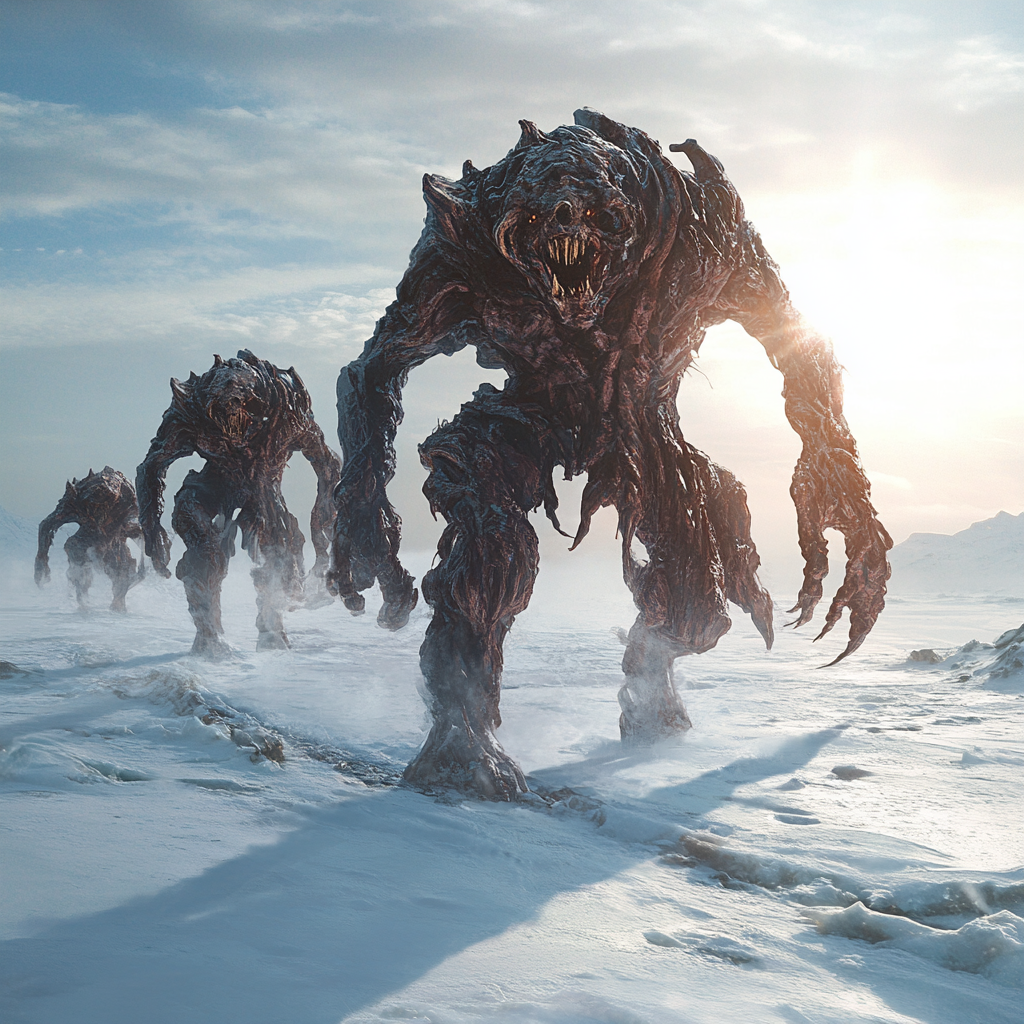
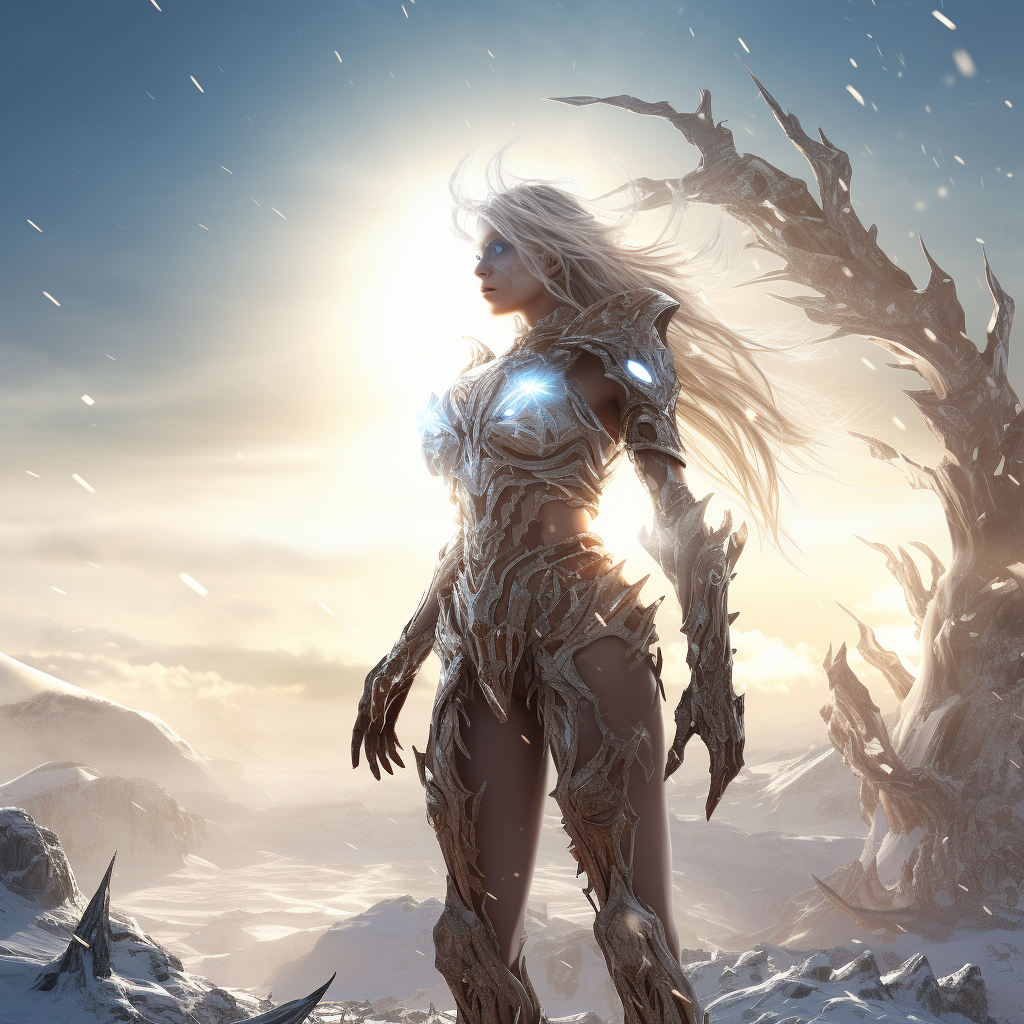
Draug
Draugs serve as the Fenris Horde’s elite enforcers—biomechanical hybrids forged from captured humans, twisted into loyal instruments of Skarn’s will. Faster and more cunning than baseline Radi-Mons, they hunt high-value targets, infiltrate colonies, and spearhead invasions. Once human, now horrors, Draugs blend remnants of their past selves with horde mutations, their forms a grotesque fusion of flesh and chitin.
Both sexes can transform into Draugs, though the process remains a mystery to humanity. There have bee nwhispers of psionic rituals or viral infusions circulate, but no survivor has confirmed the truth. The change grants superhuman strength, allowing them to rend armor or leap vast distances. Immortality follows: wounds regenerate swiftly, age halts, and they endure vacuum or toxic worlds without breath, their nostrils vestigial amid mutated lungs that draw sustenance from psionic energy.
Males retain sexual function: cocks engorge to rigid, veined lengths, capable of prolonged penetration. Yet their semen, thick and copious, lacks fertility unless refined by a Vöxtr’s processes. Pleasure drives most encounters; As such, many Draugs rut with captives or allies, thrusts fueled by primal urges, release a momentary echo of lost humanity.
Female Draugs are much rarer, picked for builds that handle fights well, while most women end up as Vöxtr fuel. Like the males, they’re sterile, no chance of pregnancy. This biological shift numbs their old sensitivities, so regular sexual encounters fall flat. Many hook up to a Vöxtr while away from regular duties, letting the breeding machine’s tubes fill and stimulate all orifices at once, stirring and reawakening feelings their mutated bodies have long forgotten.
